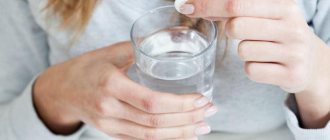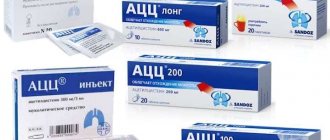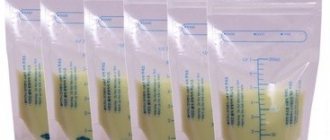During breastfeeding, the mother often has a fever. The reasons can be physiological (due to lactation) and pathological (various diseases). Fever during breastfeeding is not a contraindication for further feeding the baby with breast milk. Only in severe forms of certain diseases should it be stopped for the duration of breastfeeding.
To know whether you can continue to breastfeed your baby, you should determine the cause of the increase in body temperature.
Why does body temperature increase after childbirth?
Regardless of the course of childbirth, this natural process is a strong stress for the female body. Before the baby is born, he loses up to 8 liters of fluid and undergoes a hormonal surge. In the first days after childbirth, when milk begins to replace colostrum, the body again reacts to the change, announcing this with an increase in temperature. During breastfeeding, the temperature begins to drop, but if the baby is not active enough in terms of sucking milk, this can lead to lactostasis, that is, stagnation of milk. Then the temperature already rises to 39 ° C, and only after the next feeding or pumping does the woman feel some relief.
If the cause of the increase in temperature after childbirth is purulent mastitis, breastfeeding will have to be abandoned. If you have an acute respiratory viral infection, you can feed your baby, because along with the milk it receives additional immune protection.
However, it is not only because of milk that the temperature can rise in the postpartum period. High temperature, poor health, chest and abdominal pain can be symptoms of serious diseases such as: - mastitis; - postpartum ulcer; - endometriosis; - pyelonephritis; - pelveoperitonitis; - thrombophlebitis, etc.
Temperature with lactostasis

Why is the temperature during lastostasis? Causes.

When milk in the breast is produced in excess, this often leads to lactostasis and mastitis in a nursing woman. If you don't empty your breasts regularly, they will become full and swollen. Due to swelling, milk does not flow well: it is harder for the baby to suck it out, and it is more difficult for the mother to express. Milk stagnates in the gland, and over time inflammation occurs. Therefore, lactostasis may be accompanied by increased temperature in the body.
Also, stagnation of milk (lactostasis) can appear from blockage of the milk ducts in a nursing woman. But most often it occurs due to improper grip, long breaks between feedings, incorrect sleeping position, tight underwear, and chest trauma.
Symptoms of lactostasis are:
– Presence of lumps in the chest;
– Redness of the breast;
– Increased body temperature.
Lactostasis and high temperature, what to do?
If the mother experiences stagnation of milk and the body temperature rises to 39 degrees or even higher, this indicates the development of an inflammatory process, so it is necessary to consult a specialist (lactation consultant or doctor. During the first month after birth, you can go to the maternity hospital, where the birth took place).
It is necessary to begin treatment of lactostasis as early as possible and make every effort to eliminate the painful condition.
Lactostasis, chills and fever, what to do?
Many women face the problem of milk stagnation. The main thing is to take timely measures to improve the condition.
A lactation consultant will help you find out the cause of lactostasis, provide information on how to combat existing lactostasis and knowledge about the necessary prevention of lactostasis in the future.
General recommendations for the treatment of lactostasis with fever:
– Frequent breastfeeding;
– It may be necessary to connect additional pumping, consult a lactation specialist;
– You can apply cold to work with swelling.
How many days does the temperature last for lactostasis?
The temperature will subside as soon as the mother properly copes with stagnation of milk. The thermometer will begin to decline, improvement will occur in 2-3 days. If the mother understands that she cannot cope with stagnation on her own, she needs to seek help from a breastfeeding consultant. If there is no improvement within 48 hours after the measures taken, this is a sign that you need to see a doctor.
What to drink with lactostasis and fever?
Often, nursing mothers in such a situation have questions about the compatibility of antipyretic medications. Yes, some medications can be taken by a nursing mother, and some cannot. A breastfeeding consultant can help a mother check the compatibility of medications prescribed by a doctor with breastfeeding. Most often, doctors prescribe drugs based on ibuprofen and paracetamol; they are considered compatible with breastfeeding.
What to do if the temperature rises after childbirth?
It is not recommended to lower the temperature until it exceeds 38.5°C - the body needs to be given time to fight the disease and produce its own interferon. You should give up household chores for now. Bed rest will be useful now, but wrapping yourself in a warm blanket is not advisable, just like being in a stuffy room - the room should be cool.
Vinegar rubdowns help reduce high temperatures. To do this, vinegar is diluted in half with water and the resulting solution is treated with elbow and knee bends, neck, and groin folds.
Among medications, you can take Paracetamol - an approved drug during breastfeeding. You should not drink Aspirin, as it passes into milk and has a negative effect on the child’s body. In addition to the use of Paracetamol, rectal administration of suppositories containing ibuprofen is allowed during lactation.
What's in the cup?
First of all, you need to drink a lot so that the toxins formed during illness are quickly eliminated from the body. In addition to rinsing, it is also useful to have medicinal substances in the drink that help reduce temperature, fight inflammation and normal thermoregulation.
Correct: Brew tea from herbs - chamomile, St. John's wort, linden blossom, mint, sea buckthorn leaf, add dried raspberries or strawberries. These plants have anti-inflammatory, antibacterial, diaphoretic and diuretic effects, and promote relaxation, which is so necessary for a sick body. You can prepare this tea in a thermos. It’s good to put spices in it: ginger, cloves, cumin, cardamom, bay leaf. They help strengthen the immune system.
In addition, this tea with spices and a teaspoon of honey, if drunk constantly in small portions, regulates body temperature well, gradually returning it to normal. You can alternate it with cranberry juice.
Incorrect: You should not drink milk - at high temperatures it will only harm you and will not be completely digested.
Healing drink that reduces fever after childbirth
You can supplement bed rest and taking medications with a warm drink with honey, lemon and raspberries.
However, you should not drink large quantities of liquid, as it will cause congestion of the mammary glands. During the day, a nursing mother can drink no more than 3 glasses of drink with raspberry jam. The use of herbal infusions should also be approached with caution, since some components of medicinal preparations can cause allergic reactions in infants. If you cannot cope with your temperature within a few days, you should no longer put off visiting a doctor. Based on the clinical picture, the specialist will prescribe special medications that are compatible with feeding the baby.
How and with what to lower the temperature while breastfeeding
The temperature must be brought down if it is above 38.4. This can be done with medications that are not contraindicated for hepatitis B:
- paracetamol;
- Nurofen;
- Ibuprom.
Before using medications, be sure to consult a doctor. Only a specialist will prescribe treatment and indicate the required dosage of drugs.
When breastfeeding, a woman is recommended to bring down her temperature with the help of folk remedies, and only if they do not help, use medications.
One of the most effective ways to bring down a fever is a cold compress. You can apply a special rubber heating pad filled with ice water to your forehead. Or wet a towel folded several times with a special solution (water and 9% vinegar in a 1:1 ratio).
Various decoctions and infusions will help cope with the fever:
- cranberry juice;
- rosehip decoction;
- red currant juice.
Use folk remedies for treatment with caution, as the child may have allergies.
If the temperature is high, you should not stop feeding. Babies have not developed their own immunity, so mother’s milk containing antibodies helps them avoid getting sick or recover faster. And only for certain diseases is breastfeeding strictly contraindicated.
What's on the plate?
During a cold, it is very important not to “overload” the body, not to waste its energy on digesting heavy foods, thereby overstraining the liver, which plays a leading role in cleansing cells and tissues of toxins. The diet should be moderate and rich in nutrients that are easy for digestion.
Correct: When fighting a cold, the diet should be based on low-fat cottage cheese, soufflé, omelet, cheesecakes, boiled or baked fish, baked apples and a variety of fruits. These foods will not force the body to spend a lot of energy digesting food. Vegetable soups are very useful, to which it is good to add various cereals: rice, barley.
An excellent choice is porridge with fruit or pumpkin. All these dishes provide the necessary boost of energy and also contain a lot of pectin substances, which improve digestion and rid the body of toxins.
If you don't lose your appetite, eat small meals often. During your illness, give up all fatty, spicy, salty, and sweet foods. However, this does not apply to chocolate - the cocoa beans from which it is made have long been known as a means of increasing the body's defenses. However, the chocolate must be bitter, without milk or flavoring additives. Natural cocoa has the same effect.
Incorrect: During illness, consume meat and chicken broths, meat, especially smoked and fried meat. Butter and sour cream are also not for you yet.
What's on the body?
Correct: Even though you have a cold, dress lightly. It’s good to wash yourself with warm water several times a day and change your underwear. Do this away from drafts, in a closed bathroom. If the fever really bothers you, place a wet cold compress on your head.
It is very effective to wipe yourself with vodka or diluted alcohol. After this, you need to wear light clothing. This procedure can be repeated three to four times a day.
Incorrect: Try to dress as warmly as possible, wrap yourself up from head to toe.
By the way
Aloe is especially useful in winter: the concentration of juice in its leaves during this period increases, and therefore the content of medicinal substances. You can drink aloe juice during and after a cold, and to prevent the disease.
For medicinal purposes, leaves of plants aged 2–3 years and older are used. They are carefully separated from the stem along with the film wrapper and stored in a plastic bag in the refrigerator at 6–8 °C. After 12 days, the leaves can be used to prepare nutrient-enriched juice. The juice is not stored, but used immediately after receiving.
During illness, take 5-10 ml of fresh aloe juice half an hour before meals 2-3 times a day for 7-10 days. After illness - 1 teaspoon of fresh aloe juice half an hour before meals 2-3 times a day.











